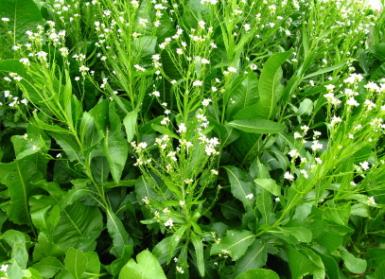Horsezone News
Healing Respiratory Ailments Naturally - Part 2 - Sinusitis & Epistaxis
By: © Victoria Ferguson Dip.Herb.Med.
Read 'Healing Respiratory Ailments Naturally - Part 1' here
SINUSITIS
 |
|
Hawthorn
|
 |
|
Horseradish
|
 |
| Echinacea |
Sinusitis is infection occurring in the sinuses of the face. Sinuses are air filled cavities within bones, known as turbinates in the nasal cavity. Usually a sinus infection produces a discharge of thick pusfrom only one nostril. In the early stages it is white or yellow, and in chronic cases progresses to green or even black. Other symptoms may include a foul smell, swollen lymph glands under the jaw, a snoring sound, facial swelling and eye discharge on the affected side. One of the most common causes is a tooth infection.
Due to the fact that sinusitis is in an encapsulated area it is difficult to treat. When treated with veterinary antibiotics it frequently returns after an apparent resolution. In chronic cases veterinary treatment is surgical drainage under general anaesthesia.
Herbal remedies are extremely effective in treating all encapsulated infections, not just such sinusitis, even in chronic cases, but also hoof abscesses, infected tendon sheaths and infections of the guttural pouch. This is because the herbs selected to treat these conditions have the ability to penetrate deep into tissue which many antibiotics cannot achieve.
Whilst a discharge from one nostril is indicative of sinusitis, it is also a symptom of bacterial or fungal infection of the nasal passages. If fungal it is much less copious than a sinus infection and may also be associated with nose bleeds.
When horses have been operated on for sinusitis and have a discharging wound this also requires topical treatment with anti-bacterial washes, as frequently they become infected with resistant bacteria such as Staphylococcus andStreptococcus.
In sinusitis sometimes the discharge fouls the feed and water so the horse needs to be isolated and the nostrils cleaned repeatedly with a 50/50 mixture of fresh lemon juice and water, and feed and water replaced regularly.
Herbal treatment for sinusitis using liquid extracts must extend over at least a full blood cycle (12 weeks) to achieve complete healing without recurrence of the condition. Chronic cases may take longer.
Herbs to treat sinusitis include Garlic, Echinacea, Rosehips, Horseradish, Horsetail and Thyme, as well as blood cleansers such as Red Clover and liver herbs such as St Marys Thistle.
BLEEDING (EPISTAXIS)
Also known as nosebleed, epistaxis, lung haemorrhage and exercise induced pulmonary haemorrhage, “bleeding” is common in racehorses, harness racing horses and to a lesser extent in eventers.
The mechanical stress in the lungs which occurs with forceful breathing during exertion cause the delicate walls of the air cells to rupture, resulting in haemorrhage.
“Researchers have found that the mechanics of the equine respiratory system impose a fundamental limit on how fast a galloping horse can breathe, which all the training in the world, cannot alter.” (1) The bio-mechanical linkage between stride and breathing means that the horse takes exactly one breath per stride in the gallop. “At high speeds the ratio of inhalation time to exhalation time in fact begins to drop. The horse simply does not have enough time to take in a full breath.”
This shows how common bleeding is and how important it is to utilise herbs for prevention purposes. The baseline is Rosehips with high feeding rates for performance horses.
A horse can quite easily have bled without there being blood coming out of the nostrils. Endoscopy may provide the evidence. Bleeding severely impairs performance and even after spelling, may often return with the onset of fast work, especially if no holistic, herbal treatment is given. Infection is a complication arising from the damaged tissue.
Herbal treatment combined with adequate spelling should commence as soon as there is any evidence of a bleed, which may only be unexplained lack of performance, and should continue until well after the horse has resumed fast work. Preventative treatment throughout competition campaigns is a smart strategy, especially as excessive use of chemical diuretics which are commonly given have no healing affects whatsoever.
Anaemia may be a secondary symptom of bleeding. Herbs to stop bleeding and to heal and strengthen pulmonary blood vessels, and to treat any anaemia are called for.
Herbs to prevent and heal bleeding are led by the styptic herb Yarrow, the pulmonary antiseptic Elecampane, the tissue repair herbs Gotu Kola and Comfrey, the nervines Vervain and Oats, and circulatory herbs Hawthorn and Rue.
Herbs to treat anaemia include Nettles, Echinacea, Yarrow & Red Clover. Nettles provide iron, Echinacea & Yarrow boost white and red cell production and Red Clover provides high copper which is needed to utilise iron.
Effective therapeutic herbal treatments should always be in liquid extract form for oral dosing prescribed and dispensed by a qualified herbal practitioner experienced in treating horses.
The team at Horsezone is excited to bring you informative articles from Victoria Ferguson Dip.Herb.Med., herbalist, horsewoman and author of The Complete Horse Herbal www.thecountryherbalist.com.au
News Search
Categories
- General
- Event Results
- Stallionzone
- Sponsored Shows
- Clubs
- Health
- Feature Horses
- Competitions
- Five Minutes With Horsezone
- Young Riders
- Reviews
- Training and Clinics
- Postcards from the saddle
- 2014 Equitana by HORSE FIRST
- 2013 Equitana
- 2012 Equitana
- 2012 London
- 2011 Equitana
- 2011 Queensland Floods
- 2010 WEG


